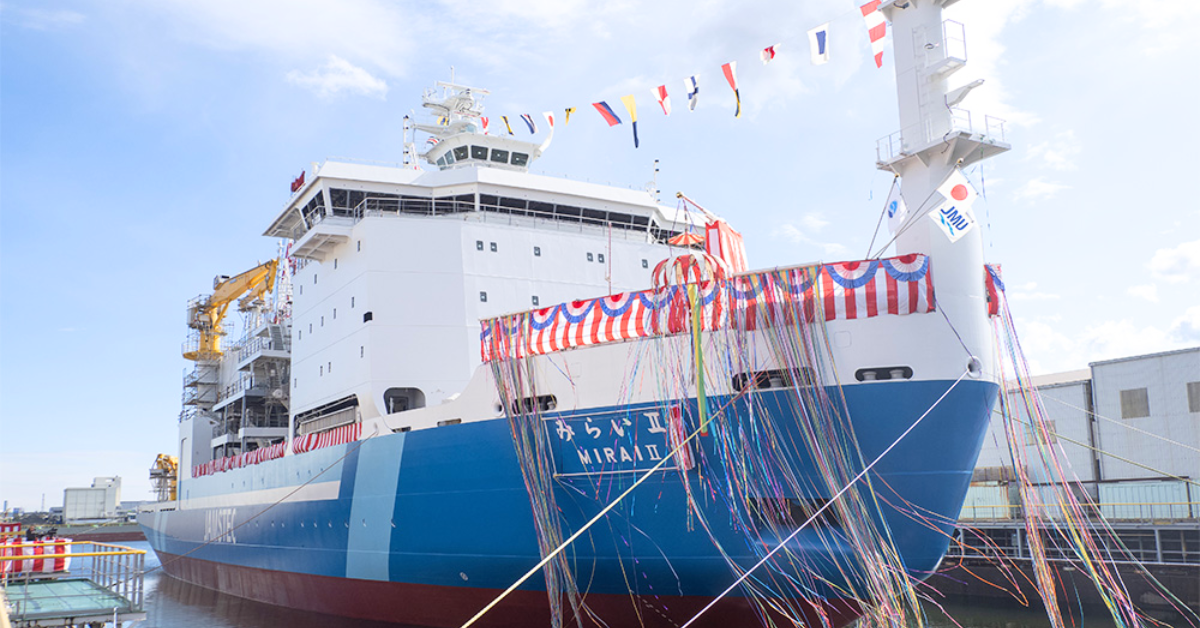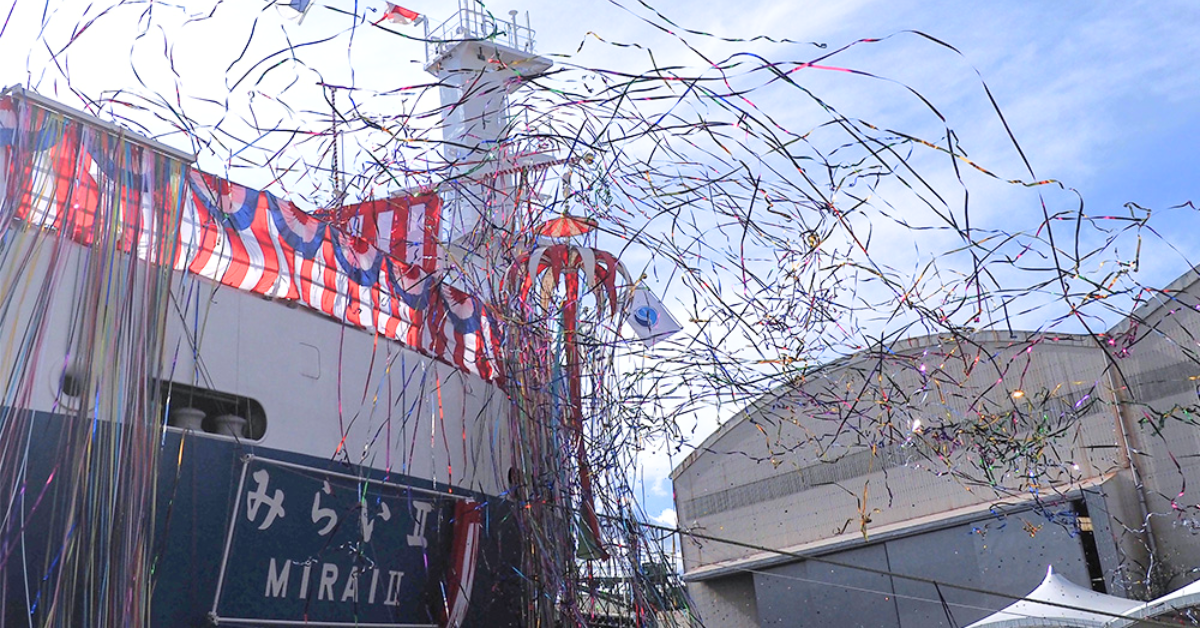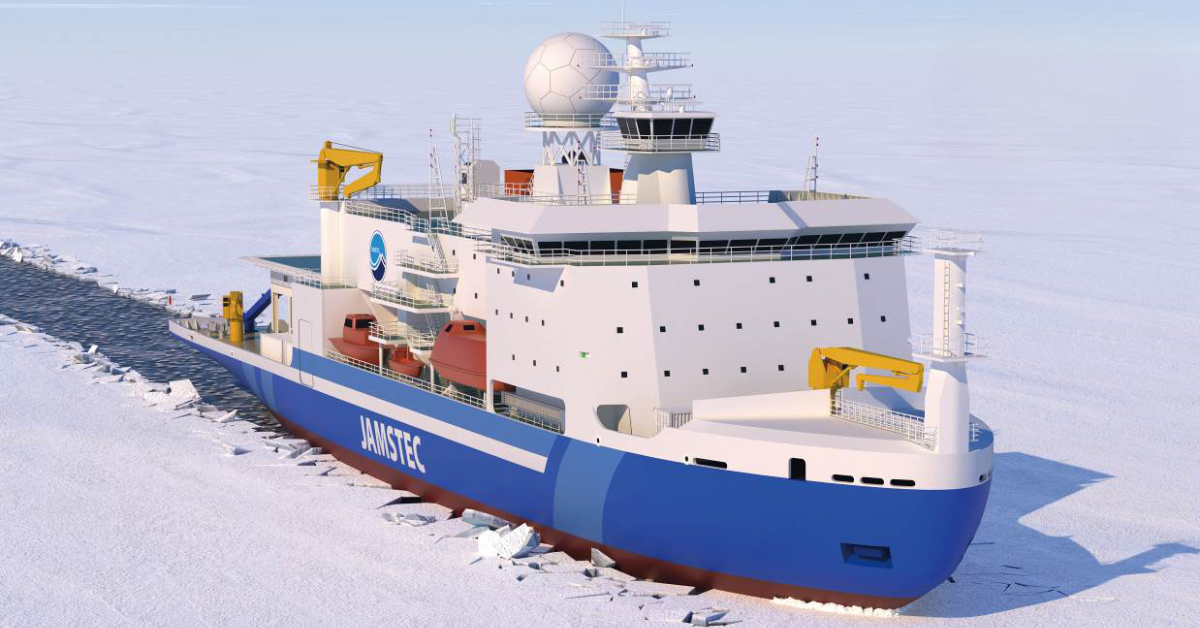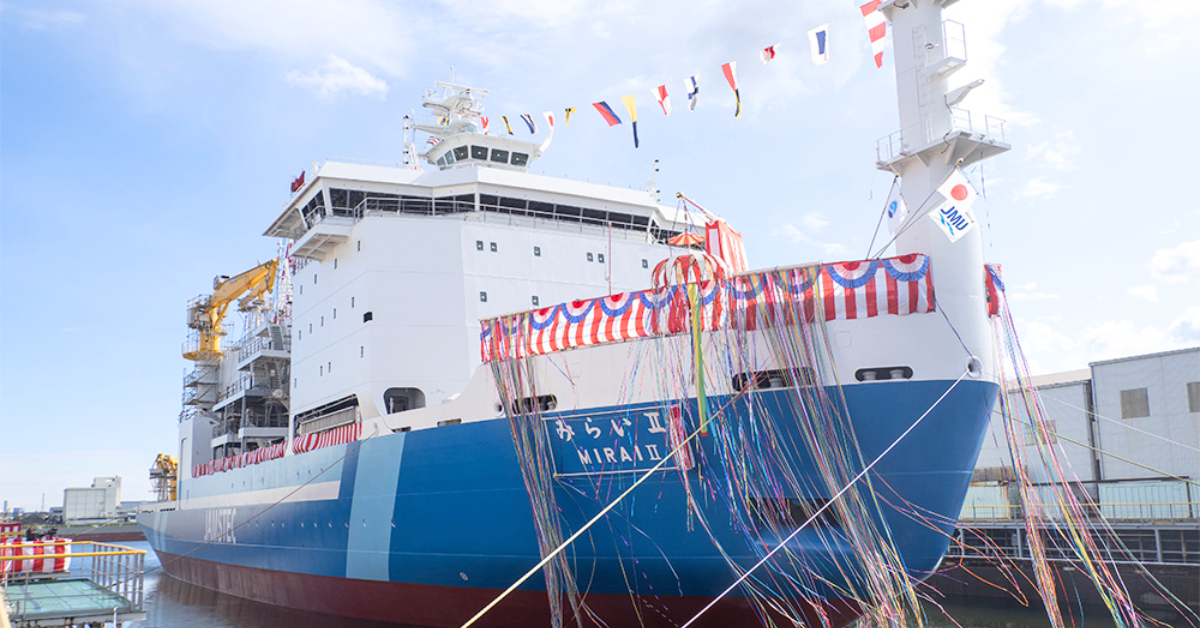
U.S. Navy’s Oldest Aircraft Carrier Leaves For Final Deployment Before Being Decommissioned
March 29, 2025
US Coast Guard Finds Illegal Hazardous Cargo At Puerto Neuvo Port
March 29, 2025
Japan has officially launched and named its latest Arctic research vessel, Mirai II, in a ceremony held on March 19, 2025, at the Isogo Plant of Japan Marine United Corporation (JMU) in Yokohama.
The ceremony was graced by the presence of Her Imperial Highness Princess Aiko.
The new vessel is being constructed for the Japan Agency for Marine-Earth Science and Technology (JAMSTEC) and will take over research operations from the original Mirai vessel.
The name “Mirai II” was chosen after a public naming competition, with the final decision made in consultation with external experts. The addition of “II” highlights the vessel’s new icebreaking capabilities and its function as an international research platform.
During the naming and launching ceremony, the ship was officially named by Vice-Minister of Education, Culture, Sports, Science, and Technology, Nonaka Atsushi, on behalf of Minister Abe Toshiko.

After the naming, Princess Aiko performed the ceremonial rope-cutting, and the vessel was successfully launched.
Officials expressed gratitude for the many name submissions received from the public and stated that Mirai II will build upon the legacy of its predecessor by taking forward international research efforts.
The vessel is designed for extreme cold-weather operations. It features Polar Class 4 certification, meaning it can operate in year-round icy conditions. The ship can break through 1.2 meters of flat one-year ice at a speed of 3 knots, making it well-suited for Arctic research.
The vessel is equipped with advanced research instruments to study the atmosphere, ocean, sea ice and weather patterns.
Japan’s latest icebreaker construction technology has been incorporated into its design, ensuring that it can navigate efficiently in both icy and open ocean waters.

Mirai II measures 128 meters in length, and 23 meters in width, with a draft of 8 meters. It has an international tonnage of 13,000 tons. The vessel is powered by three diesel generators, each producing approximately 5,600 kW, along with one dual-fuel diesel (DFD) generator producing around 2,600 kW.
The ship features electric propulsion with controllable pitch propellers, twin shafts and twin rudders, ensuring excellent performance in harsh conditions.
It can accommodate 97 people, including 34 crew members and 63 researchers. The vessel has been designed to operate in extreme ice conditions, with Polar Class 4 certification, meaning it can navigate through thick first-year ice mixed with some multi-year ice.
Mirai II will now undergo outfitting work at JMU, after which its performance will be tested through sea trails. If all goes as planned, the vessel will be delivered to JAMSTEC in November 2026.
Reference: jamstec
Source: Maritime Shipping News


